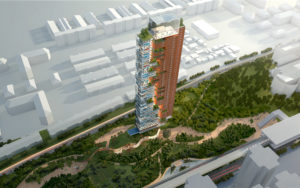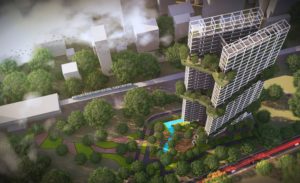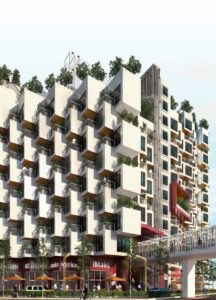Future of Affordable Housing Design



Caption – The winning designs of the competition. From left to right : 1st prize GDP Architects Sdn Bhd; 2nd prize GSD Architects; 3rd prize Qharwarizmi Architect
Concerns of housing affordability plague cities in both developing and advanced economies across the globe. And, what drives this concern are some key factors such as the rise in income growth and urbanisation, driven by better job opportunities in cities.
The definition of affordable housing is housing that is sufficient in quality, location and cost, which helps its occupants satisfy other essential living needs. In other words, the location, quality and build-up of a house is equally as important as the financial affordability of a household.
A study by the United Nations has indicated that the urban population of the world has grown rapidly from 751 million in 1950 to 4.2 billion in 2018. Asia, despite its relatively lower level of urbanization, is home to 54% of the world’s urban population, followed by Europe and Africa with 13% each.
Our country faces a similar issue in this regard. Several reasons encompassing structural, cyclical, institutional and cultural factors, culminating in a mismatch between supply and demand, has contributed towards houses becoming severely unaffordable in Malaysia since 2016.
Consequently, Malaysia faces a shortage of affordable homes for the masses. And, when it comes to design for affordable housing schemes, it has been pretty much the same everywhere, as reported in Edgeprop.my.
It has been the same stagnant look for a long time, and budget-tight homebuyers have no choice but to accept these offerings. We speak to Serrina Hijjas or HIJJAS Architects & Planners to share her thoughts on what can be done in design for affordable housing:

Hi Serina, could you help our readers understand what the rules at play for affordable housing are?
Adequate provision of affordable housing is a sustainable development goal that all countries struggle to address. And currently, in Malaysia, accommodation that can be afforded by new families within city centres is a challenge.
If that’s the case, how should we address this challenge?
First, we should start by investigating all possible housing solutions. I believe we can achieve this by creating a balance between high rise density living versus community and green spaces which encourages a sense of neighbourhood. Contemporary urban housing which can support affordability and sustainability in younger households should also be valid solutions.
What are your views on the current housing situation in Malaysia?
The number of low-density housing schemes has increased in recent times. With that, it gives people the option to buy-in ‘community’ housing with gardens, parks, bicycle paths and shaded trees becoming the common ground in the recreating of these neighbourhoods. I’m hoping that we can also adopt this concept for the lower income group in rural areas like the’ kampung’ living compound. Row to row housing isn’t sustainable in terms of generating our urban heat island footprint.
Why aren’t high-density areas sustainable?
In high density urban and semi-urban housing areas, we appear to be moving into micro and Soho urbanism housing. Rows of podium blocks are beginning to be the new high-density landscape, that does not connect with the ground, which isn’t an excellent sustainable model.
But has there been any improvement as compared to the last 10 to 20 years?
Housing in the past decade has shifted more to vertical living. There is a more significant emphasis on small living spaces. Overall the housing standards of medium-cost housing have moved upwards in quality but has plateaued in terms of one solution fits all. We are emphasising efficiency on overall social integration and living, or the concept of housing as a living shelter.
What we have not yet fully grasped is layered living with gardens and parks in the sky. How do we break down the scale to provide more green spaces rather than less on-the-ground spaces?
In what ways can housing design work towards achieving a more affordable and sustainable life in Malaysia?
Micro-housing combined with social spaces for students and young families on their own to lease as housing will be the concept for in future. We will probably move away from owner-occupied housing if housing costs do not match income. So, flexibility in layout, micro villages in the sky and, layering our vertical and horizontal living in high-rise housing should be the approach.
And to round out the conversation on design, what are some trends you think that will work for our current situation or the future?
Green, affordable housing is responsive to our tropical climate here. I believe it’s going to be the norm for affordable homes to be climate-change-proof. We’re talking about cross ventilation, shading with balcony overhangs, monsoon windows, proper thermal proofing from temperature rise. And of course, flexible layouts! They can have plots of land in the sky, where adjacent to their apartments are open spaces for family expansion.
I’m glad we’ve seen this in the recent submissions for Housing 4.0. A flexible design is an appealing format for new homebuyers with a growing family.

